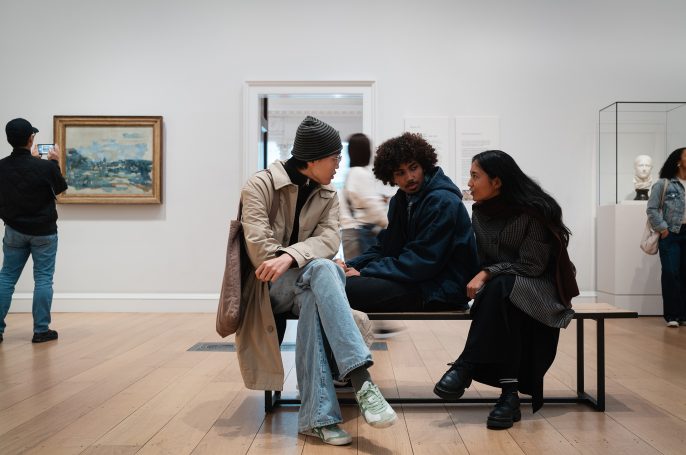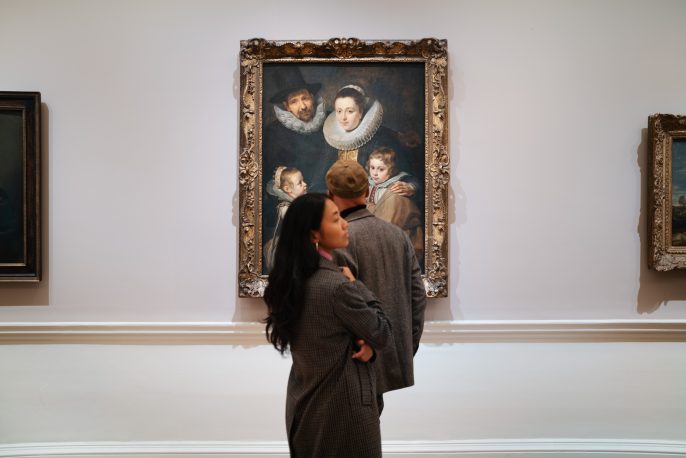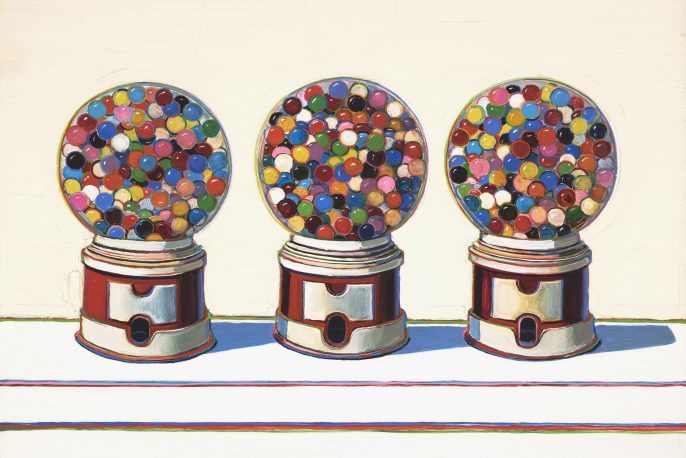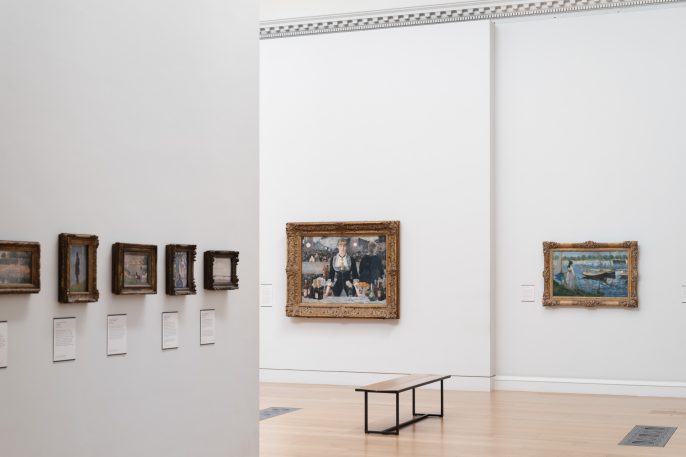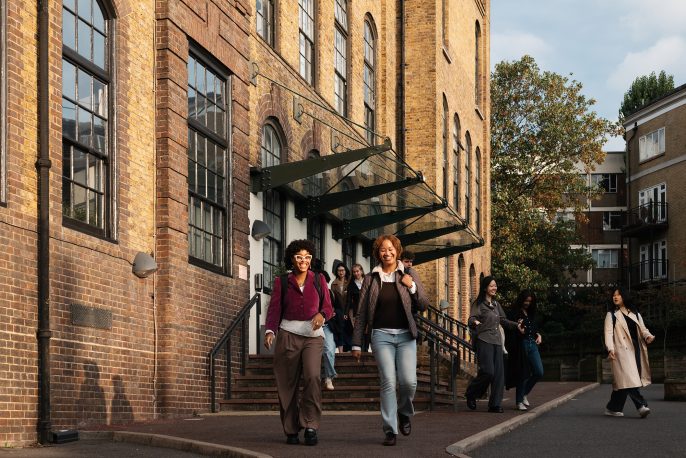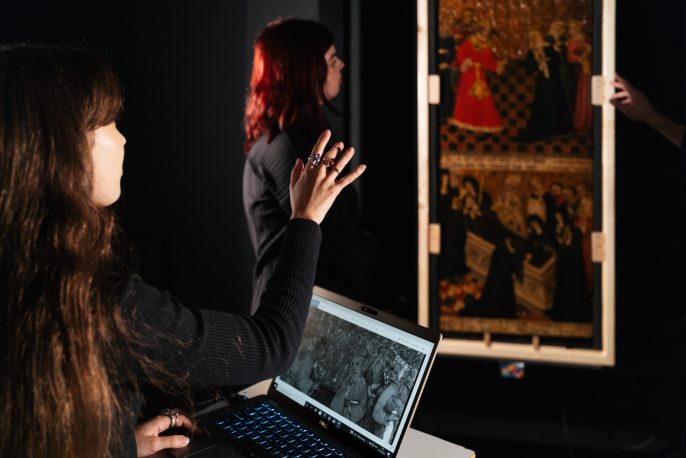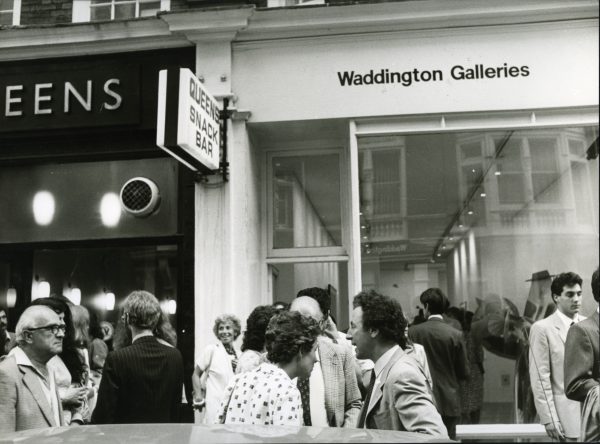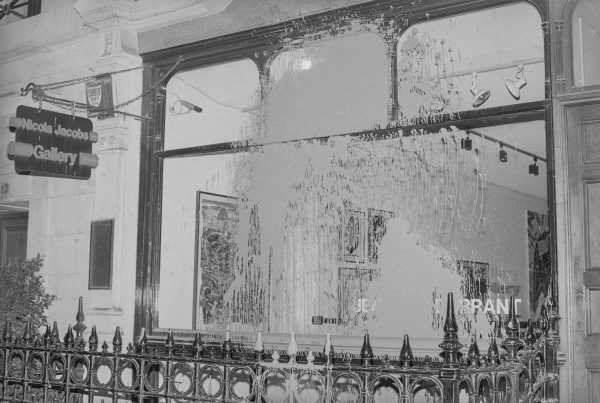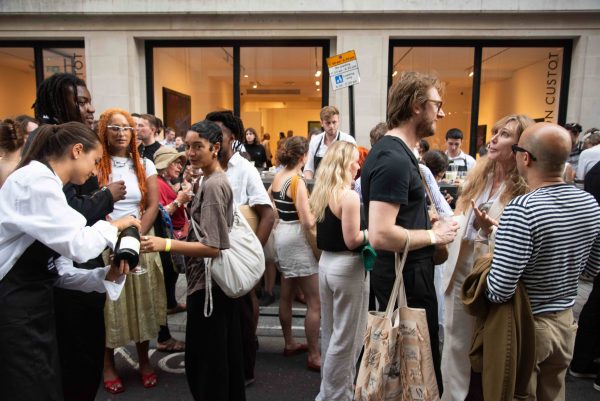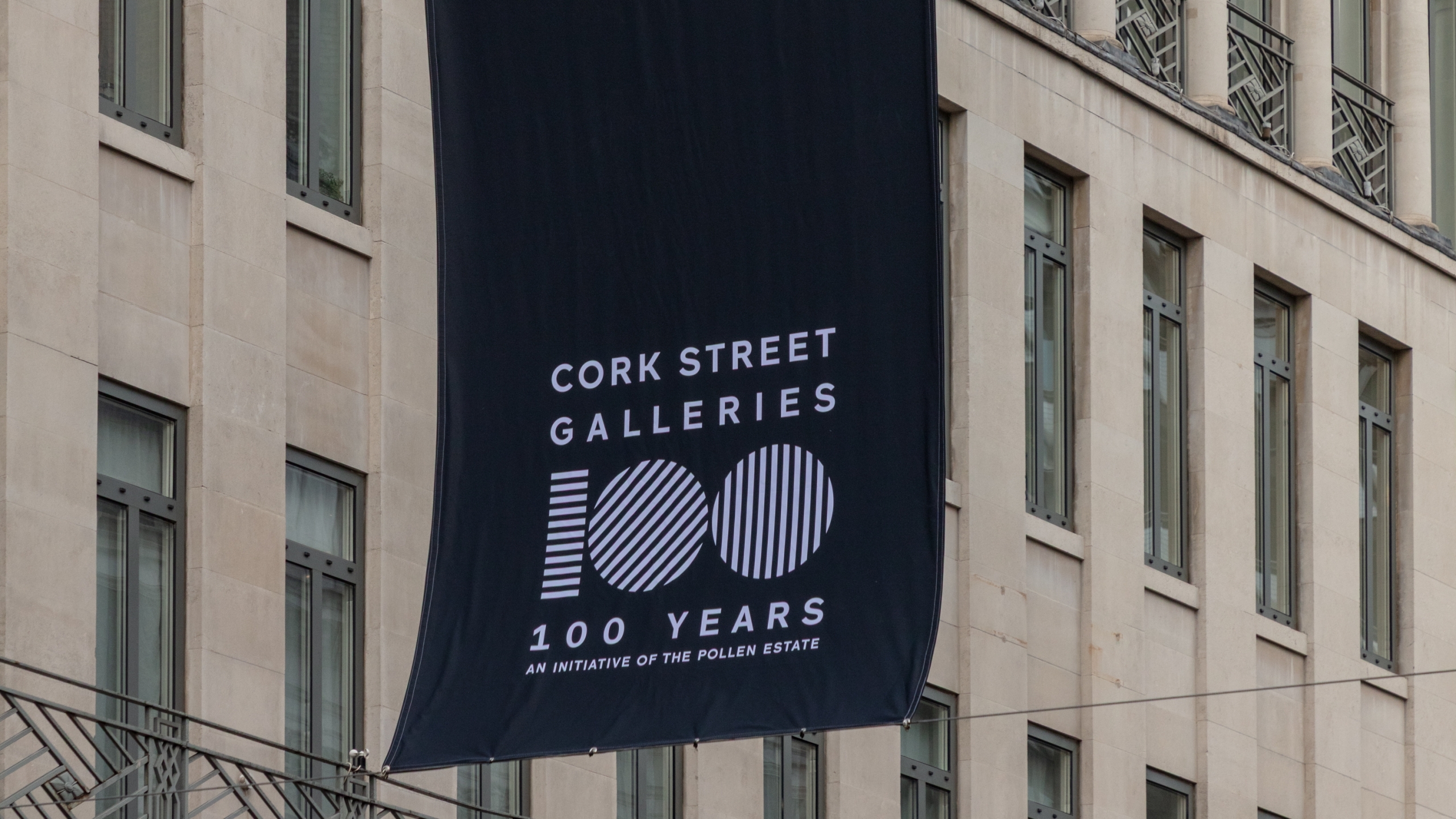
Blog: Cork Street celebrates 100 years of galleries
By Dr Stephanie Dieckvoss, Senior Lecturer in Art History
From our co-lead on the MA Art and Business course at The Courtauld, find out about the fascinating history of one of the most significant art streets in London.
Fifteen galleries showcasing modern and contemporary art from around the world are located on Cork Street. Waddington Galleries, now operating as Waddington Custot, is one of the longstanding establishments on the street, having occupied its current location since 1985. Leslie Waddington (1934–2015) founded the gallery in 1966 on the same street. He not only introduced American abstract painters such as Milton Avery, Helen Frankenthaler, Kenneth Noland, and Morris Louis to London but also supported the careers of emerging British artists from the ‘New Generation’, including David Annesley, Peter Blake, Michael Bolus, John Hoyland, and Patrick Caulfield, as well as sculptors like Barry Flanagan.
Most recently, in October 2023, Maria Varnava relocated her Tiwani Gallery to the Cork Street while maintaining a presence in Lagos, Nigeria.[1] Varnava appreciates the latest development in the area, where nearly all ground-floor retail units are now galleries, and commends the street’s international vibe. In an interview with the author, she remarks that ‘it’s exciting to work with many British artists in the middle of their careers who have connections to Africa. So it’s impressive to see how diverse Cork Street is and how it responds to the global nature of art.’
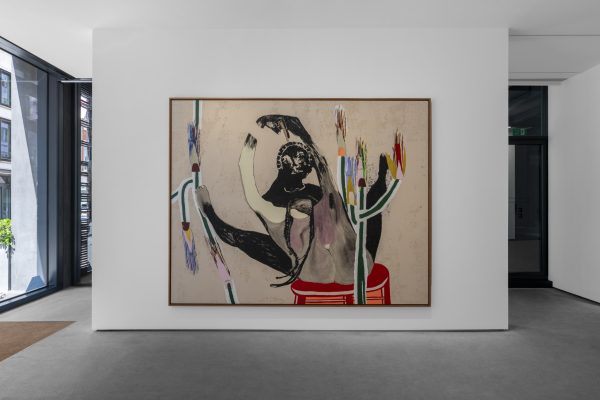
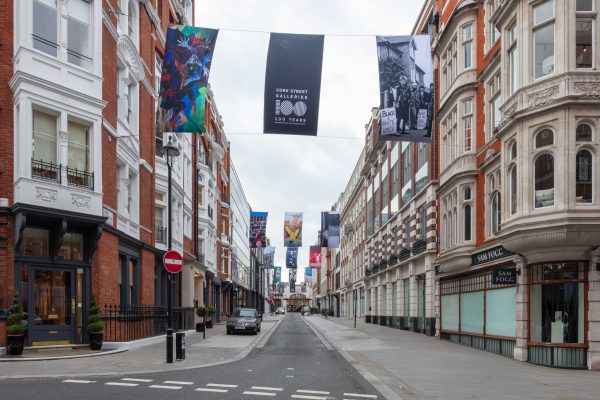
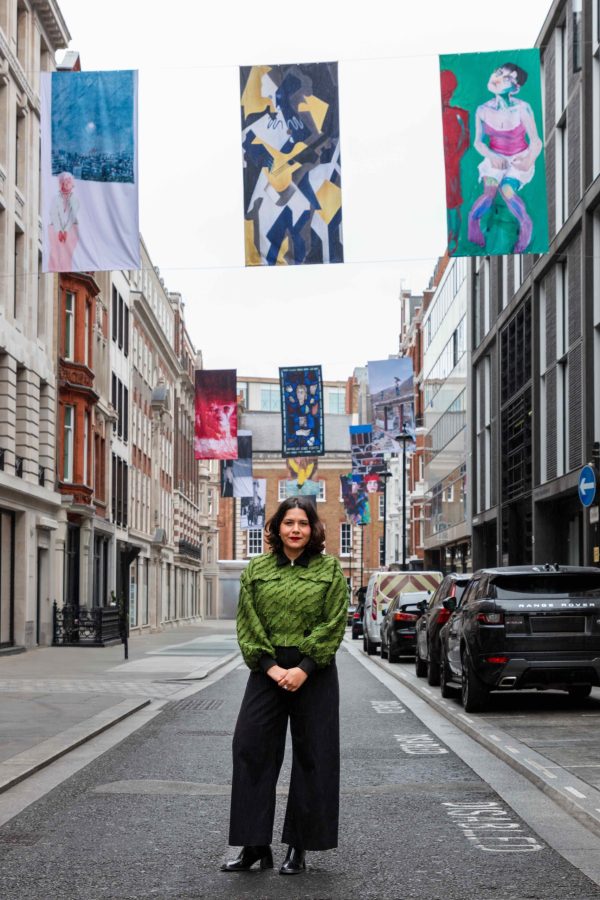
The Goodman Gallery from South Africa opened its London branch in 2019, following the completion of extensive reconstruction by the Pollen Estate, the main landlord in the area, which had replaced old buildings with new office blocks. According to gallery director Jo Stella-Sawicka, it was the only site in London that met their needs. The Pollen Estate has since welcomed art dealers such as Holtermann Fine Art and the renowned gallerist Alison Jacques to its group of gallery tenants. More than any other commercial gallery, ‘No. 9 Cork Street’, a rental space managed by art fair organiser Frieze, reflects the evolving 21st-century art market. Its spaces, spanning two townhouses, allow international galleries to temporarily ‘pop up’ and reach new audiences in the heart of the London art scene, located in Mayfair. Located between Sotheby’s auction house to the north and Christie’s in the South, around the corner of the Royal Academy, it’s one of the lay lines of the art market in London, as Jacob Twyford of Waddington Custot points out in conversation. Year-round, Cork Street presents visitors with a diverse range of engaging exhibitions.
It all began a century ago with the opening of the Mayor Gallery in 1925. Initially showcasing artists such as Ivon Hitchens and Paul Nash, the gallery soon featured works by Francis Bacon, Max Ernst, Barbara Hepworth, and Henry Moore. In 1936, the Redfern Gallery relocated to become the second gallery on Cork Street, having previously been based on Bond Street. It is noteworthy as the only pre-war gallery still operating at its original site. Cork Street’s reputation for avant-garde art attracted Peggy Guggenheim, who briefly operated her Guggenheim Jeune gallery there in 1938 before relocating to New York. After the disruptive years of the Second World War, it was Roland, Browse, and Delbanco that opened its doors in 1945, an occasion vividly recalled by one of the founding partners, Lilian Browse, in her autobiography, Duchess of Cork Street‘, published in 1999. The gallery continued to operate in a more traditional manner, alternating exhibitions of 18th- and 19th-century art with those of contemporary art, although they were still one of the few to show living artists in the period after the war.
However, it was during the 1960s that galleries founded by Bernard Jacobson and Leslie Waddington transformed the street into a centre for contemporary art. What was then still emerging art quickly gained recognition and became established. Cork Street expanded and developed, and at the same time, it became a symbol of the established art market. This may have prompted the 1985 act by the ‘Grey Organisation’, a group of ‘post-punk’ artists who splattered paint over all the shop windows in a clandestine operation to protest against the ‘lifeless art elite’. Although Victoria Miro opened her gallery on Cork Street in the same year, taking over the premises from Robert (Bob) Fraser, who had exhibited Jean-Michel Basquiat and Keith Haring there, Miro was among the first galleries to promote a new generation of artists in London. However, after 2000, the new hub of contemporary art shifted to the East End, where Miro also relocated. The rise of young art did not occur in the heart of commerce but near the artists, in industrial halls.
While in 2012 Cork Street still had around 20 galleries, its reputation was waning. By then, not only had the galleries appeared tired, but also the offices above them. The property owners, the Pollen Estate and Native Land, aimed to redevelop the area, but the galleries began campaigning to preserve the street. They petitioned Westminster Council to designate the street for gallery use. The “Save Cork Street” campaign gathered many supporters and attracted significant attention. Time Magazine reported that in 2011, 80 per cent of the art trade was conducted in Mayfair.[2] Looking back a decade, one can say that, on one hand, the street lost a number of dealers, such as the Mayor Gallery, which permanently relocated to Bury Street in St. James’s. Others had to move away for a number of years. But now, the area is once again a hub of activity, and its more international outlook aligns well with the changing tastes in art as much as with evolving art business practices.
[1] https://corkstgalleries.com/galleries/.
[2] Paramaguru, Kharunya. ‘Saving Cork Street: Is London’s Historic Art District Under Threat?’ Time, 12 February 2013. https://style.time.com/2013/02/12/saving-cork-street-is-londons-historic-art-district-under-threat/.
